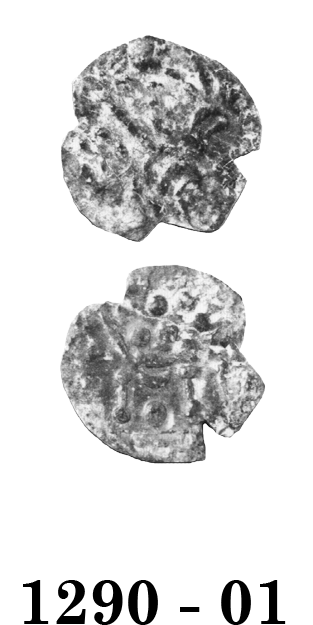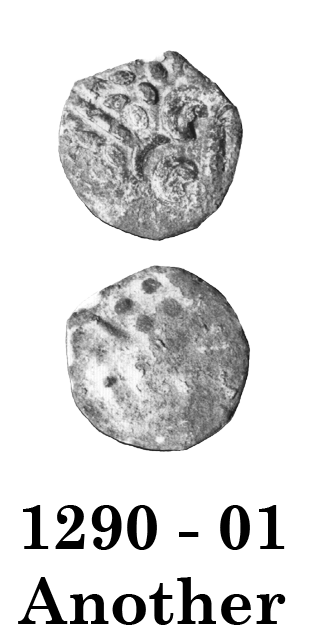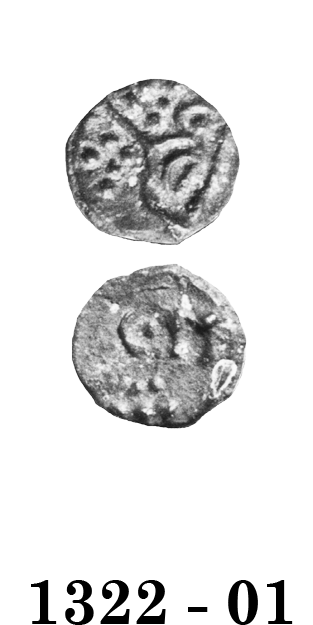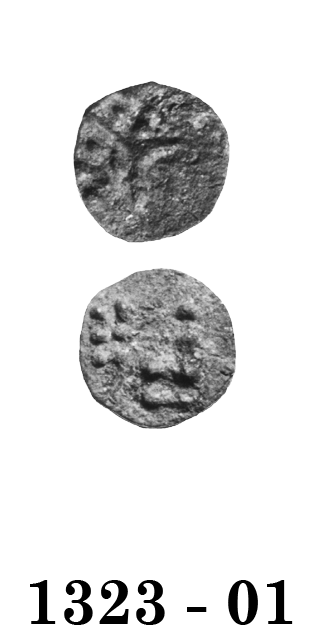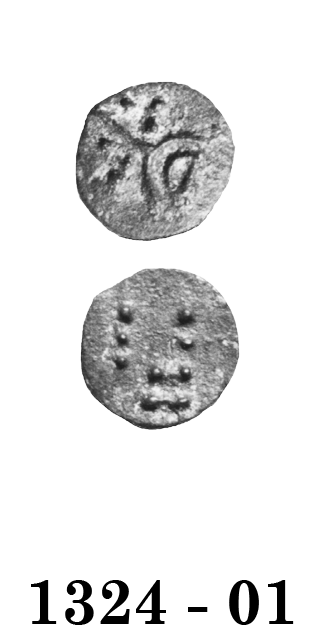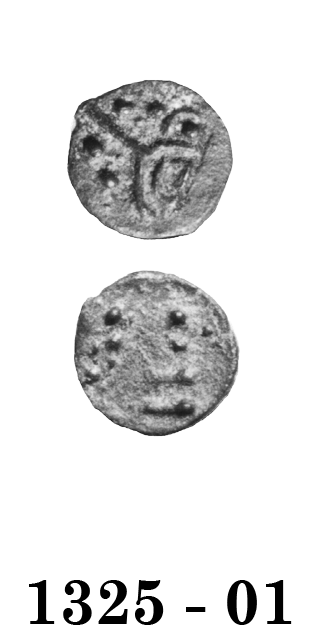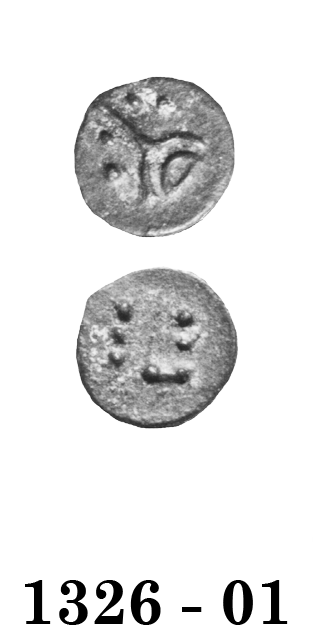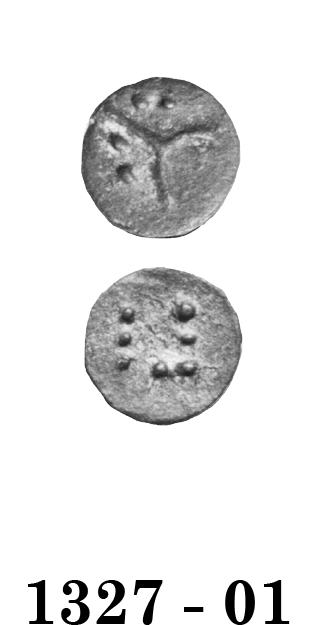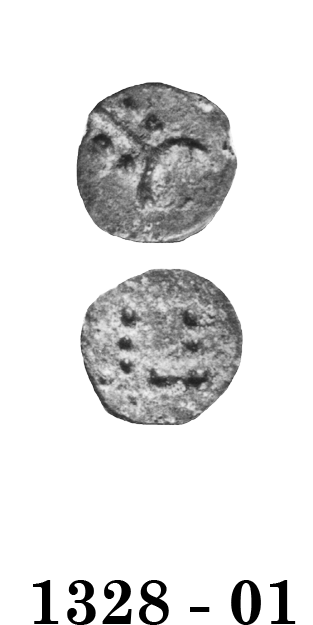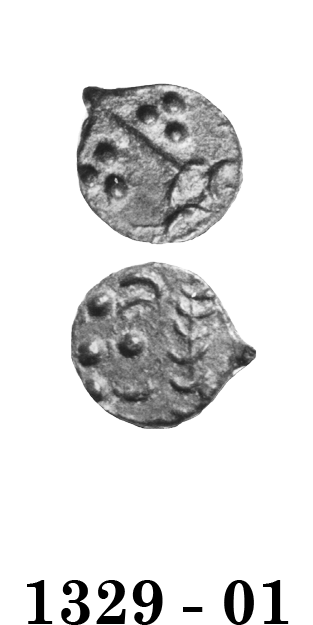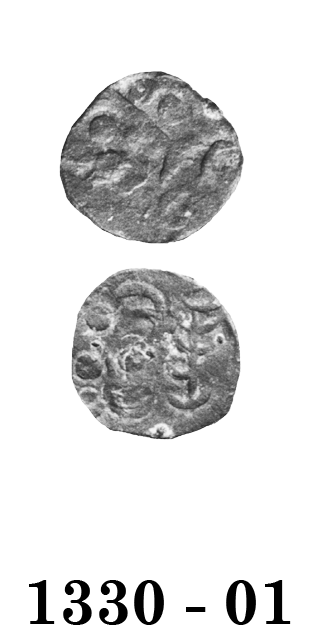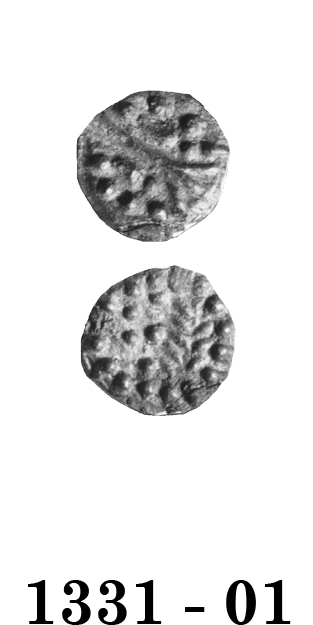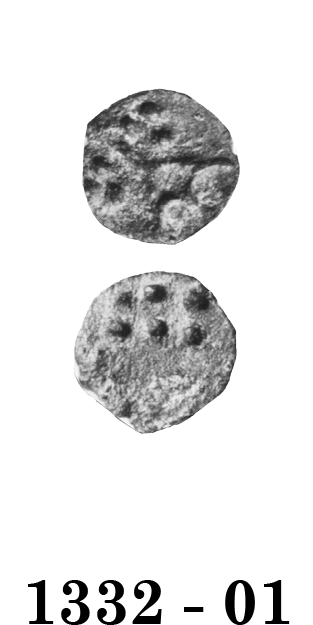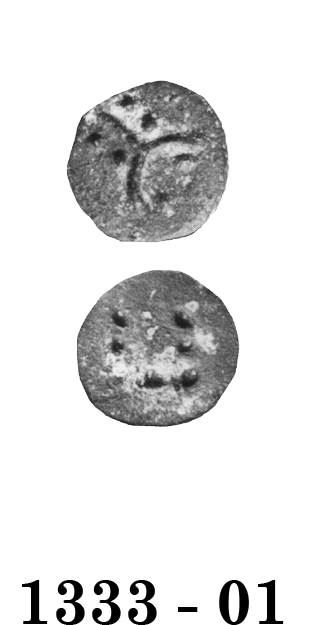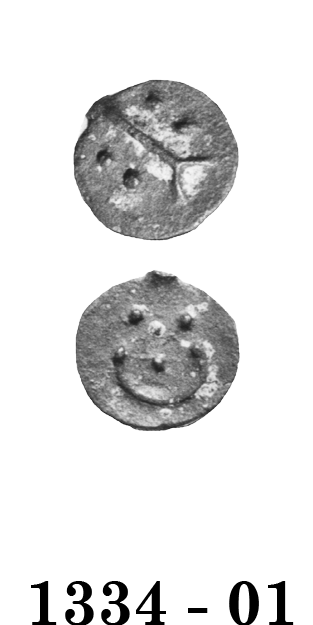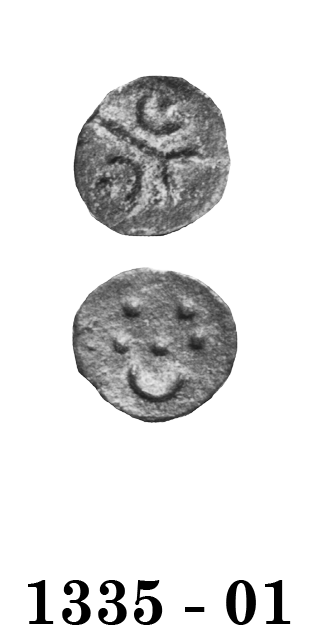
Celtic Coinage of Britain
third edition
Click on coin to see hidden information
Durotrigan Struck Bronze Coinage
The struck bronzes apparently follow the billon coins, but the sequence and dating are difficult to identify. The bronzes were probably struck for a long time, because they degrade in style until the head and horse are almost unrecognizable.
Durotrigan Cast Bronze Coinage
The earliest cast bronzes copy the Apollo head and the horse from the struck coins. Consequently, they probably followed the struck coinage without great delay. The weights are constant enough for cast coins and different denominations cannot be identified.
The best method of arranging these coins is somewhat controversial, because a simple sequence of "evolving" images may be misleading. As a comparison, the images on the Kentish Cast Bronze series have been shown to be a poor indicator of type. Instead, the sequence of marks left by the different mould production methods yielded a better understanding.
Unfortunately, an analysis of the Durotrigan cast coinage carried out in the 1980s has never been published. In 1953, Mack listed the coins according to the number of pellets in the field. Although this ultimately may not produce the most revealing sequence, it has been reproduced here. To aid students of the series, Mack's numbering system has been embedded in the one used here – the catalogue number is Mack's plus 1000. Thus Mack number 344 becomes 1344 here.
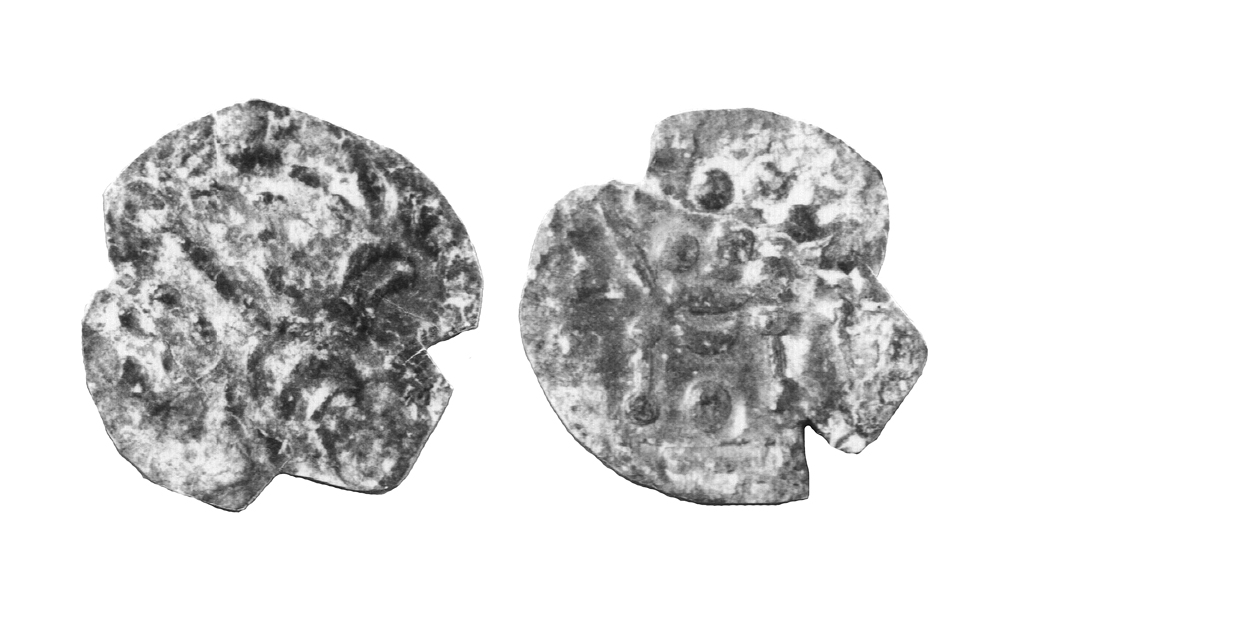
1290 - 01 Struck Bronze Type
30 B.C.-10 A.D. Common
Bronze Stater ca. 3.4 gms. 19 mm
Earliest Record: Evans, 1864
OBV: Abstract head of Apollo right
Identifying points:
1) similar to 1235 - 01 but head larger and cruder
REV: Disjointed horse left
Identifying points:
1) similar to 1235 - 01 but horse larger and cruder
CLASSIFICATION: Durotrigan J
NOTES:
- Many in museums
- The style of these becomes increasingly cruder over time.
- Often confused with plated forgeries of 1235 - 01
- The trend-surface map suggests a date 58-45 B.C. for the earlier types, but the records of findspots must include some plated forgeries mistaken for bronzes. The dating for this type needs more investigation, and the one given above is provisional, at best

1290 - 01 Struck Bronze Type
30 B.C.-10 A.D. Common
Bronze Stater ca. 3.4 gms. 19 mm
Earliest Record: Evans, 1864
OBV: Abstract head of Apollo right
Identifying points:
1) similar to 1235 - 01 but head larger and cruder
REV: Disjointed horse left
Identifying points:
1) similar to 1235 - 01 but horse larger and cruder
CLASSIFICATION: Durotrigan J
NOTES:
- Many in museums
- The style of these becomes increasingly cruder over time.
- Often confused with plated forgeries of 1235 - 01
- The trend-surface map suggests a date 58-45 B.C. for the earlier types, but the records of findspots must include some plated forgeries mistaken for bronzes. The dating for this type needs more investigation, and the one given above is provisional, at best
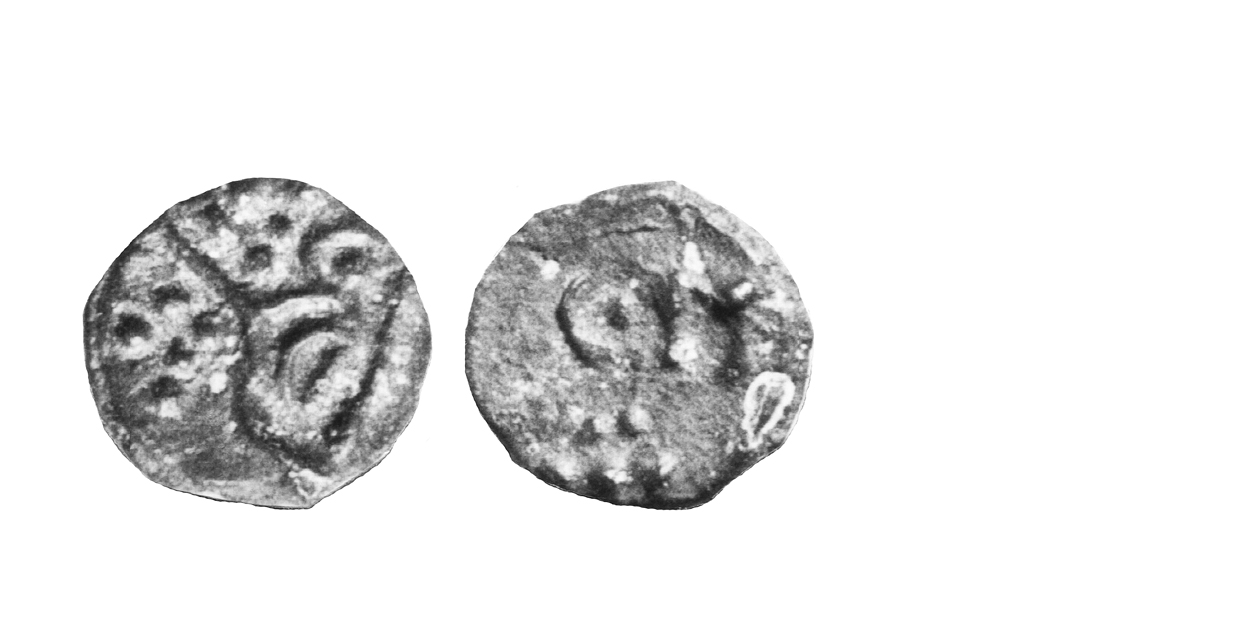
1322 - 01 Cast Bronze
10-45 A.D. Rare
Bronze Unit 17 mm
Earliest Records: Hill, 1911 and Bushe-Fox, 1915
OBV: Disintegrated head of Apollo right
Identifying points:
1) remnants of Apollo head
REV: Disjointed horse left
Identifying points:
1) remnants of horse
CLASSIFICATION: Durotrigan K
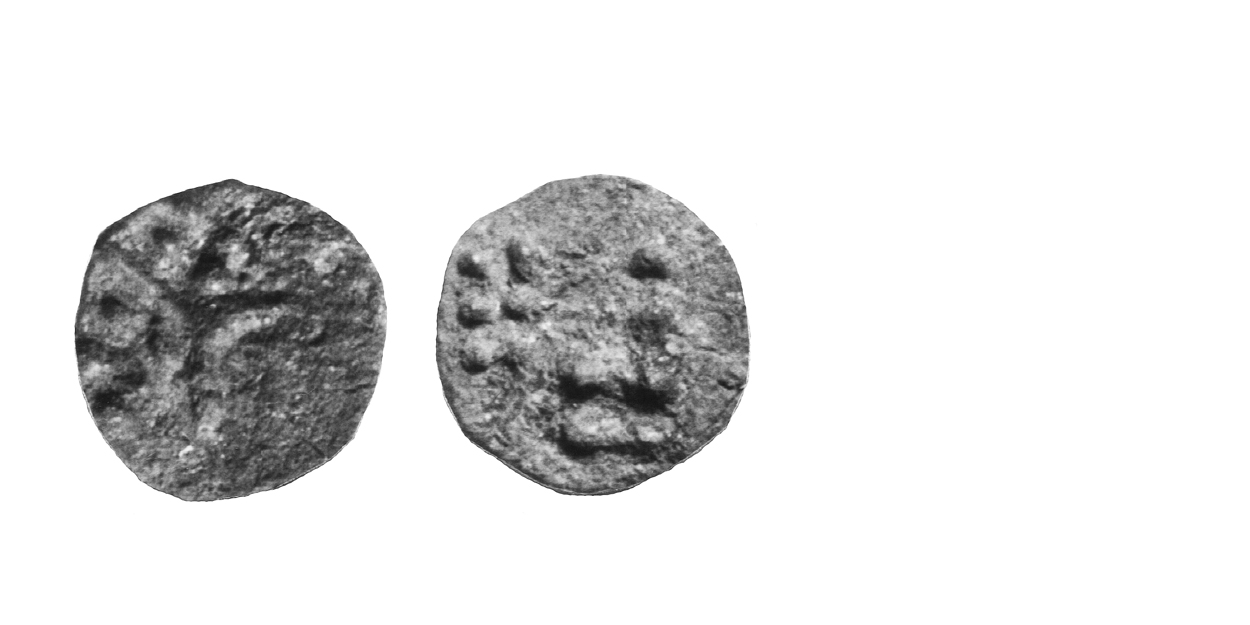
1323 - 01 Cast Bronze
10-45 A.D. Rare
Bronze Unit 2.5-3.0 gms. 16 mm
Earliest Records: Hill, 1911 and Bushe-Fox, 1915
OBV: Disintegrated head of Apollo right
Identifying points:
1) remnants of Apollo head
REV: Disjointed horse left
Identifying points:
1) twelve pellets in field
2) some remnants of horse's legs
CLASSIFICATION: Durotrigan K
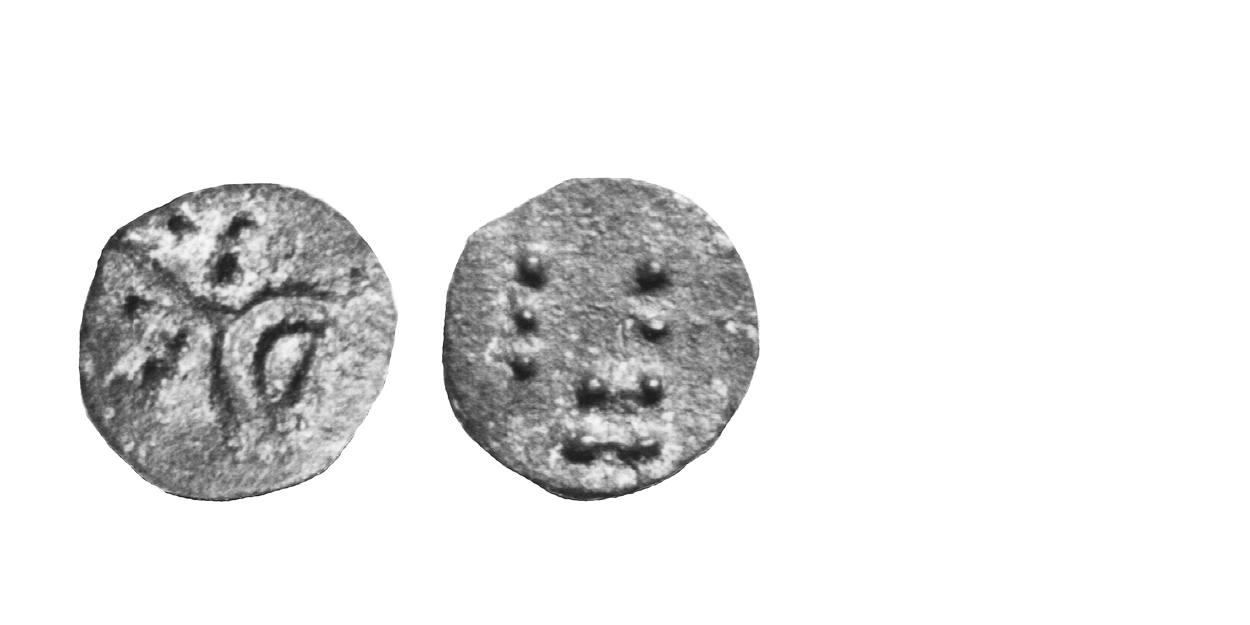
1324 - 01 Cast Bronze
10-45 A.D. Rare
Bronze Unit 16 mm
Earliest Records: Hill, 1911 and Bushe-Fox, 1915
OBV: Disintegrated head of Apollo right
Identifying points:
1) remnants of Apollo head
REV: Disjointed horse left
Identifying points:
1) remnants of horse
CLASSIFICATION: Durotrigan K
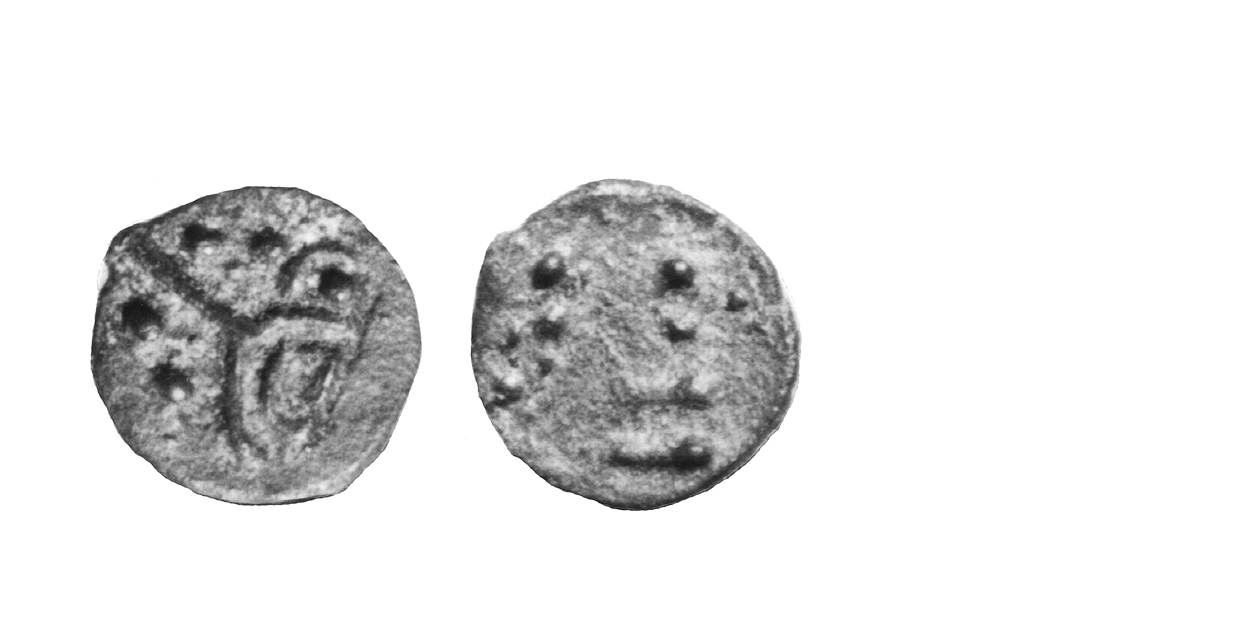
1325 - 01 Cast Bronze
10-45 A.D. Rare
Bronze Unit 16 mm
Earliest Records: Hill, 1911 and Bushe-Fox, 1915
OBV: Disintegrated head of Apollo right
Identifying points:
1) large "Y" remains from Apollo head
2) two pellets on one side of the Y
3) three pellets and a crescent on the other side
REV: Pellets
Identifying points:
1) nine pellets in field
CLASSIFICATION: Durotrigan K
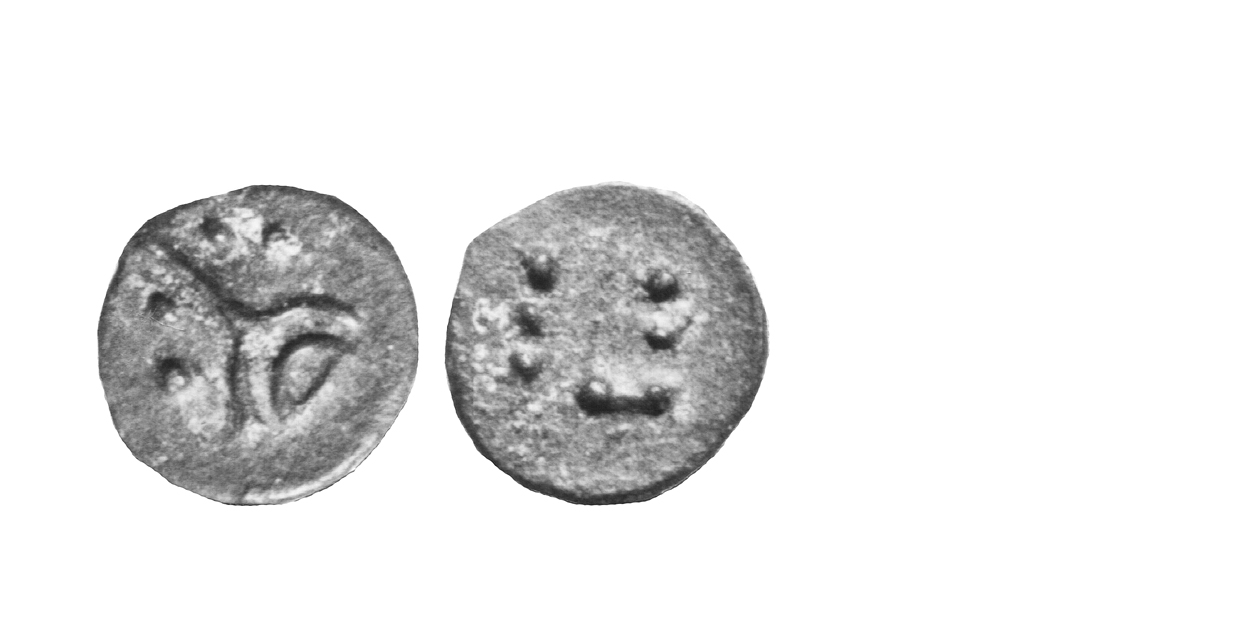
1326 - 01 Cast Bronze
10-45 A.D. Rare
Bronze Unit 16 mm
Earliest Records: Hill, 1911 and Bushe-Fox, 1915
OBV: Disintegrated head of Apollo right
Identifying points:
1) large "Y" remains from Apollo head
2) two pellets on one side of the Y
3) two pellets on the other side
4) crescent in fork of Y
REV: Pellets
Identifying points:
1) seven pellets in field
CLASSIFICATION: Durotrigan K
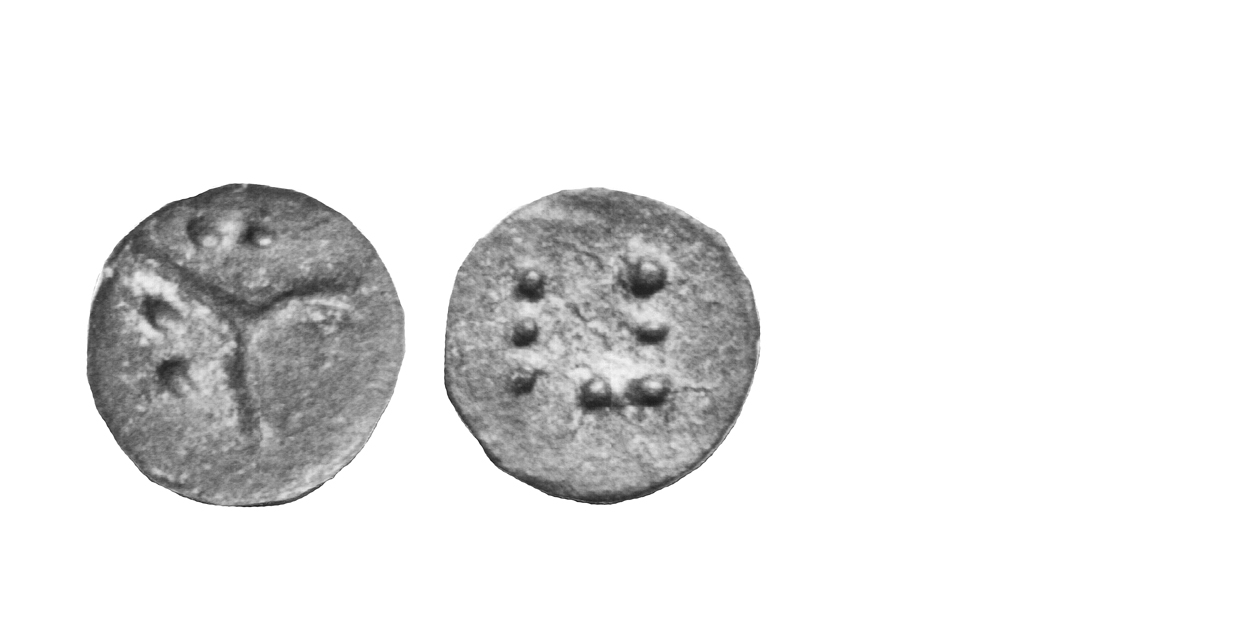
1327 - 01 Cast Bronze
10-45 A.D. Rare
Bronze Unit 16 mm
Earliest Records: Hill, 1911 and Bushe-Fox, 1915
OBV: Disintegrated head of Apollo right
Identifying points:
1) large "Y" remains from Apollo head
2) two pellets on one side of the Y
3) two pellets on the other side
4) pellets arranged diagonally
REV: Pellets
Identifying points:
1) seven pellets in field
2) two pellets connected by line
CLASSIFICATION: Durotrigan K
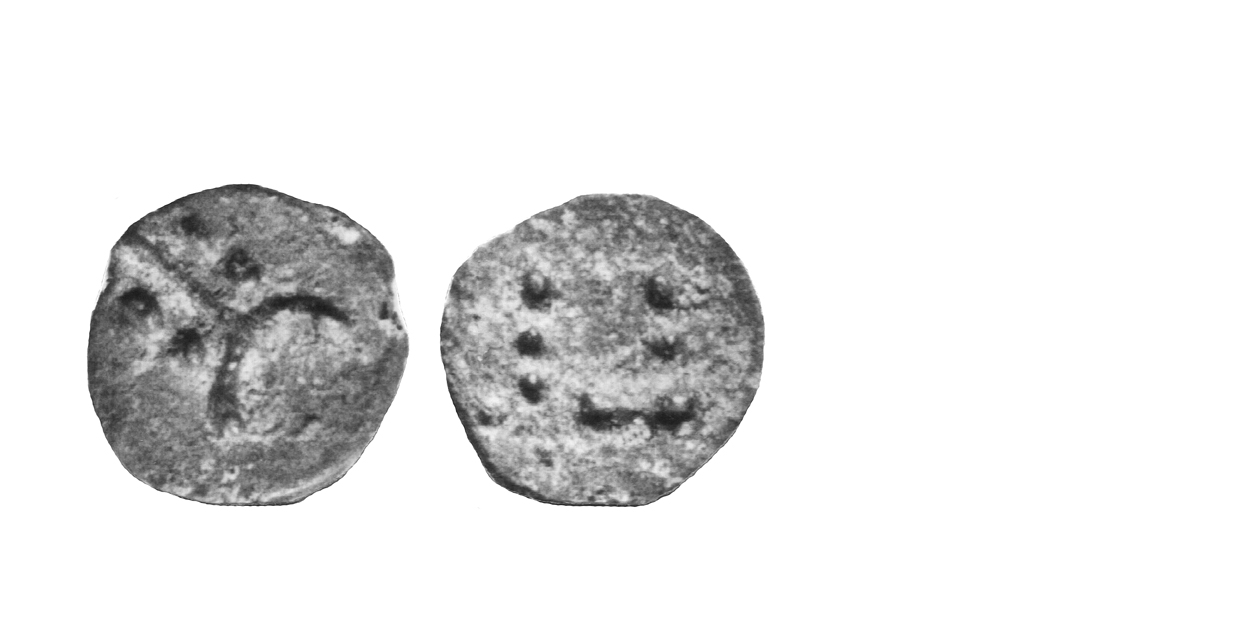
1328 - 01 Cast Bronze
10-45 A.D. Rare
Bronze Unit 1.6-2.1 gms. 16 mm
Earliest Records: Hill, 1911 and Bushe-Fox, 1915
OBV: Disintegrated head of Apollo right
Identifying points:
1) large "Y" remains from Apollo head
2) two pellets on one side of the Y
3) two pellets on the other side
4) pellets arranged vertically
REV: Pellets
Identifying points:
1) seven pellets in field
2) two pellets connected by line
CLASSIFICATION: Durotrigan K
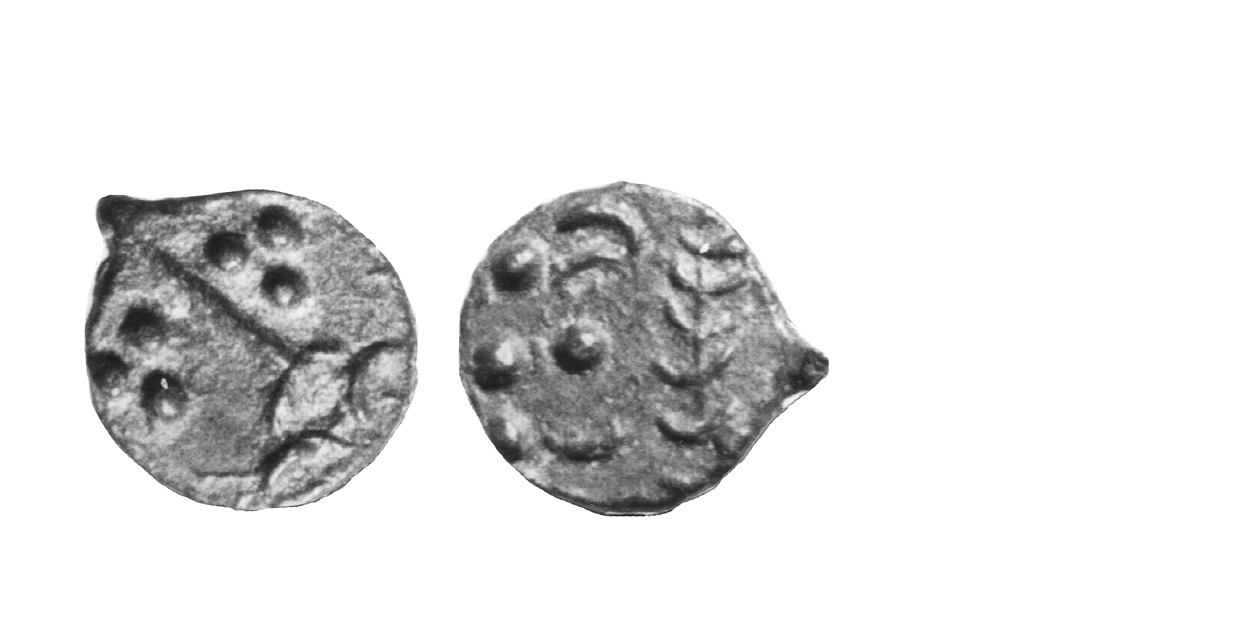
1329 - 01 Cast Bronze
10-45 A.D. Rare
Bronze Unit 2.2-2.6 gms. 16 mm
Earliest Records: Hill, 1911 and Bushe-Fox, 1915
OBV: Disintegrated head of Apollo right
Identifying points:
1) large "Y" remains from Apollo head
2) three pellets on one side of the Y
3) three pellets on the other side
4) two crescents near fork of Y
REV: Pellets
Identifying points:
1) four pellets in field
2) crescent and branch-like object in field
CLASSIFICATION: Durotrigan K
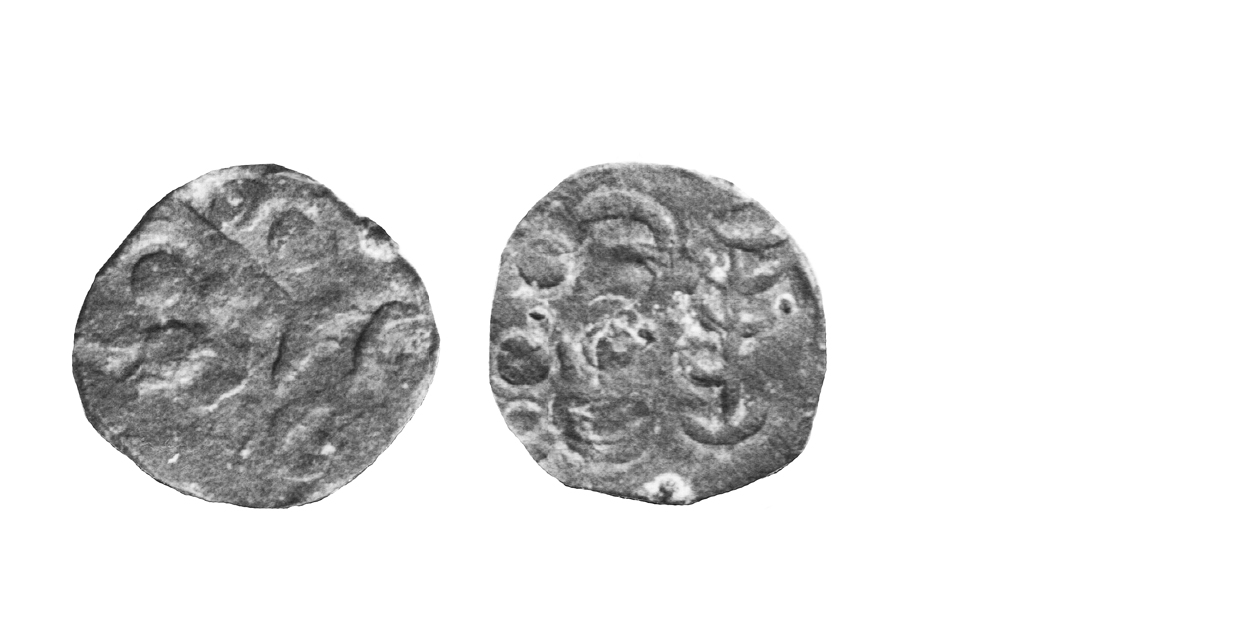
1330 - 01 Cast Bronze
10-45 A.D. Rare
Bronze Unit 1.6 gms. 17 mm
Earliest Record: Hill, 1911
OBV: Disintegrated head of Apollo right
Identifying points:
1) as 1329 - 01
REV: Pellets
Identifying points:
1) as 1329 - 01
CLASSIFICATION: Durotrigan K
NOTES:
- Coin is a hammered-out example of 1329-01
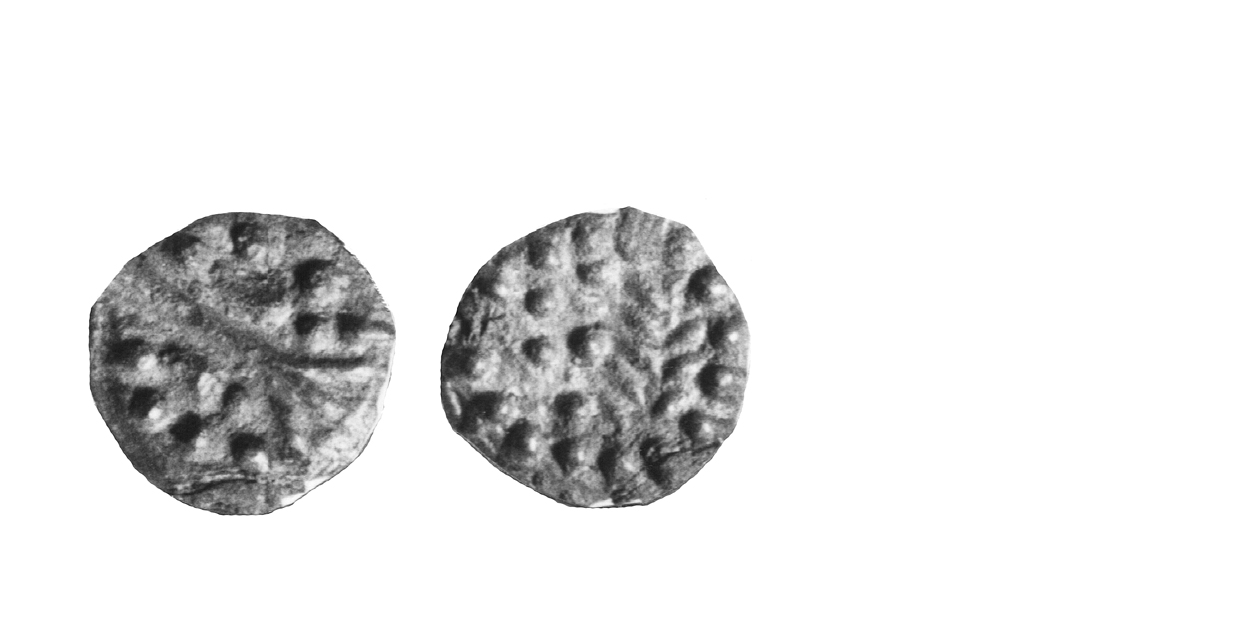
1331 - 01 Cast Bronze
10-45 A.D. Rare
Bronze Unit 16 mm
Earliest Records: Hill, 1911 and Bushe-Fox, 1915
OBV: Disintegrated head of Apollo right
Identifying points:
1) trident with five pellets and a crescent on either side
REV: Pellets
Identifying points:
1) circle of pellets with pellets and a branch inside
CLASSIFICATION: Durotrigan K
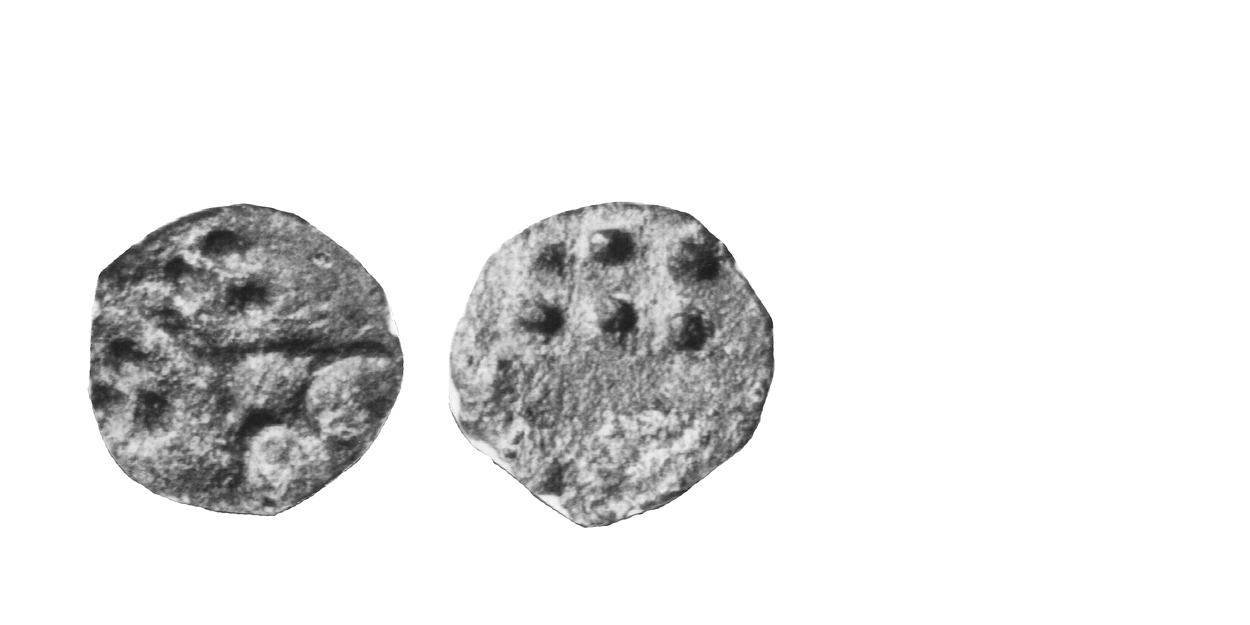
1332 - 01 Cast Bronze
10-45 A.D. Rare
Bronze Unit 2.0 gms. 16 mm
Earliest Records: Hill, 1911 and Bushe-Fox, 1915
OBV: Disintegrated head of Apollo right
Identifying points:
1) large "Y" remains from Apollo head
2) three pellets on one side of the Y
3) three pellets on the other side
REV: Pellets
Identifying points:
1) six pellets in field
CLASSIFICATION: Durotrigan K
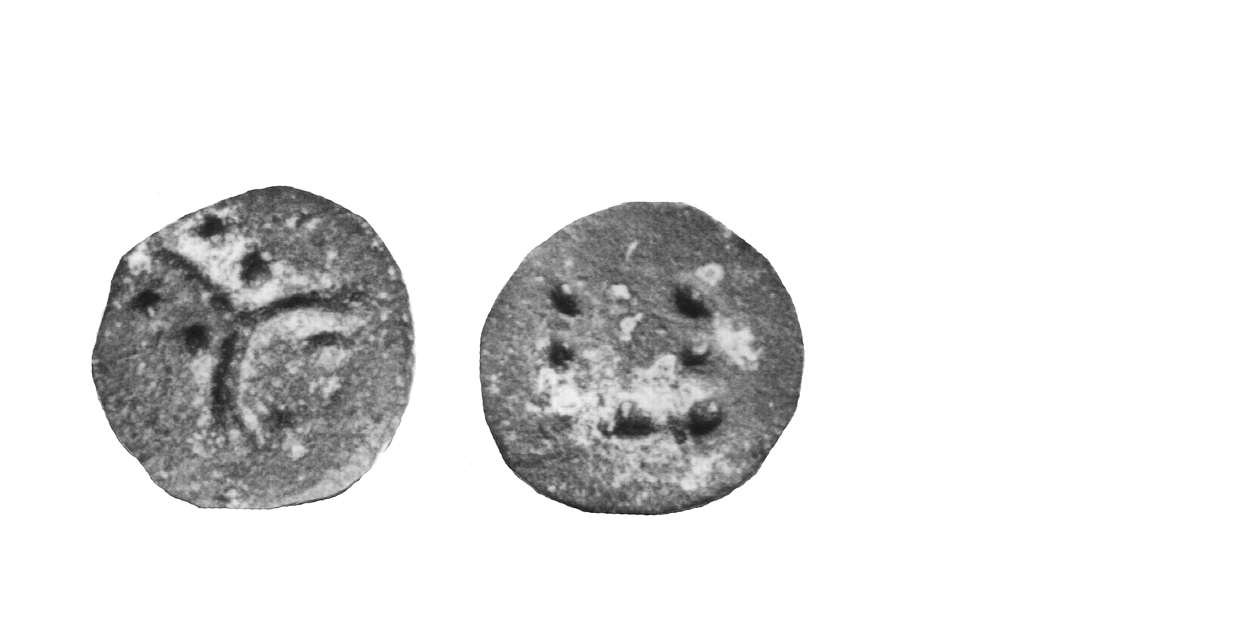
1333 - 01 Cast Bronze
10-45 A.D. Rare
Bronze Unit 15 mm
Earliest Records: Hill, 1911 and Bushe-Fox, 1915
OBV: Disintegrated head of Apollo right
Identifying points:
1) large "Y" remains from Apollo head
2) two pellets on one side of the Y
3) two pellets on the other side
4) two pellets in fork of'Y'
REV: Pellets
Identifying points:
1) six pellets in field
CLASSIFICATION: Durotrigan K
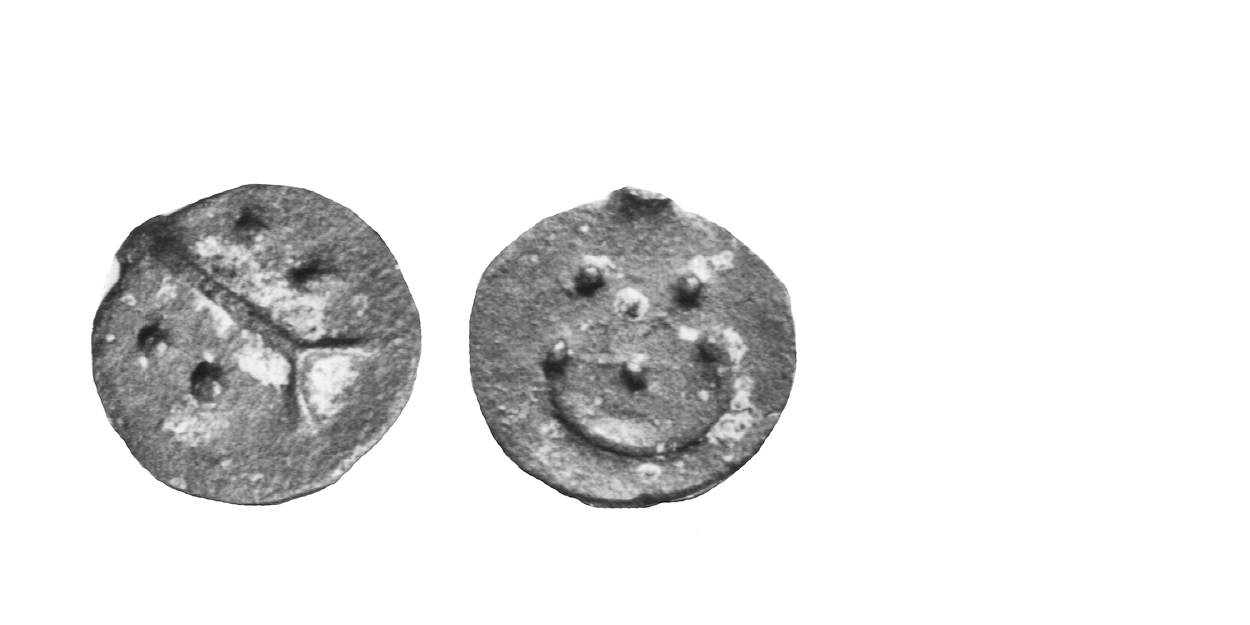
1334 - 01 Cast Bronze
10-45 A.D. Rare
Bronze Unit 2.4 gms. 16 mm
Earliest Records: Hill, 1911 and Bushe-Fox, 1915
OBV: Disintegrated head of Apollo right
Identifying points:
1) large "Y" remains from Apollo head
2) two pellets on one side of the Y
3) two pellets on the other side
REV: Pellets
Identifying points:
1) three pellets in field
2) large crescent in field
CLASSIFICATION: Durotrigan K
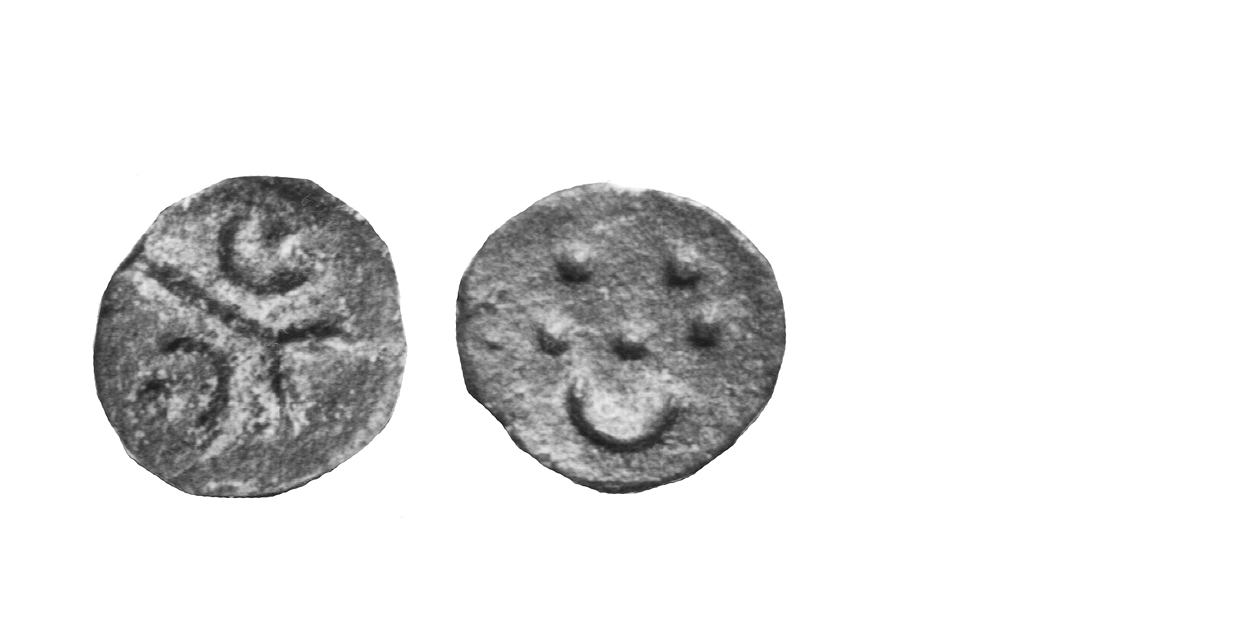
1335 - 01 Cast Bronze
10-45 A.D. Rare
Bronze Unit 16 mm
Earliest Records: Hill, 1911 and Bushe-Fox, 1915
OBV: Disintegrated head of Apollo right
Identifying points:
1) large "Y" remains from Apollo head
2) one pellet on one side of the Y
3) one pellet on the other side
4) pellet-in-crescent on either side of Y
REV: Pellets
Identifying points:
1) five pellets in field
2) some coins have a crescent in the field
CLASSIFICATION: Durotrigan K
The Coinage of the Durotriges
The Durotriges occupied all of Dorset, parts of Somerset, Wiltshire and Hampshire. They had extensive trading contacts with the Armorican peninsula and consequently their coinage was unlike that of the other British tribes. Armorican coins were primarily silver and billon, and the bulk of the Durotrigan coinage was made of these metals instead of gold.
After their first issues, the Durotriges ignored the mainstream of British coinage, suggesting they were economically isolated. Moreover, their coins circulated less and less beyond the tribal boundaries as time went on, and as the tribe's isolation increased.
Initially however, the Durotrigan coinage was an integral part of the economy of southern Britain. Their first coins were inspired by those of the Atrebates/Regni and these did circulate beyond the tribal borders. The CHUTE TYPE, a gold stater first struck about 65 B.C., was adapted from the Southern Westerham Type of the Atrebates/Regni/Belgae. The Durotrigan moneyers evidently struck the staters using the correct alloy and standard weight at the outset. The Atrebatic/Regnan/Belgic influence was short lived, however, for the tribe had converted to an Armorican-style silver coinage by the middle of the Gallic War.
At the beginning of the Gallic War, the Durotriges did two divergent things to their gold coinage. First, they struck a series of gold staters of increasingly lighter weight and lower gold content. The Chute Type was replaced by the CHUTE-CHERITON TRANSITIONAL TYPE and finally the CHERITON TYPE.
One Cheriton Type Stater has been analyzed metallurgically, and has been found to have a high tin content. This suggests the Durotriges were debasing their gold staters with addition of bronze to the alloy. The Cheriton staters perhaps represented an emergency attempt to maintain a gold coinage for trade with the other British tribes. If this was the case, the attempt failed because production soon stopped.
The second change to the coinage was the introduction of a Southern Westerham Type copy in white gold, which rapidly became debased to silver, billon and ultimately bronze. These coins, although occasionally found outside the tribe's territory, were primarily used in the Durotrigan economy since no other tribe used such coins. The series was long-lived, with many types issued in succession. The silver stater and its billon descendants are accompanied by fractional denominations.
Whether the Durotriges went to a silver standard because of the preferences of their Armorican partners, or because they simply ran out of gold bullion, is uncertain. Their trading contacts used mostly silver coins, and by the time of the Gallic War were using them exclusively. After the defeat of the Venetic Fleet and conquest of Armorica by the Romans, the Durotriges ran out of bullion of all types, because their trade with the continent was cut off. They had already been excluded from the British trading networks by strong competition from the Atrebates/Regni/Belgae and Trinovantes/Catuvellauni. Durotrigan silver coins ceased about 30 B.C., and were replaced by struck bronze staters of increasingly crude style. The silver fractional denominations disappeared entirely.
A series of cast bronzes follows, starting probably in the first century A.D., and known mostly from two large hoards. A small number of extremely rare silver coins carrying the inscription CRAB are found in Durotrigan territory. Although these pieces appear Atrebatic/Regnan/Belgic in style, they have been attributed traditionally to the Durotriges because of the findspots.
The Durotrigan coinage would have come to an end in the mid-forties A.D. as Vespasian's legions overran the tribal territory. The tribe offered difficult resistance to the Roman invasion and their coinage would have been ruthlessly suppressed. Durotrigan coins are sometimes found in surprisingly late hoards of Roman pieces, but probably these represented curiosities at the time of deposit.
The site of the Durotrigan mint has never been located with certainty, and several mints may have been in operation. One likely place was the trading port at Hengistbury. Some of the rare varieties of billon staters may have been irregular issues, struck by local authorities.
The moneyers produced flans by the 'Flat Rock' method, pouring molten metal directly on a smooth surface. Some of the coins display splash appendages produced during the flan pouring operation. The Durotriges learned the technique from Armorican moneyers, whose coins also show the appendages. The early gold and silver coins were well-struck, but the later billon ones were hastily produced in enormous numbers and were consequently less well made. The manufacturing methods for the cast coins have never been studied, and represent an opportunity for original research.
A number of plated forgeries of silver staters are known and sometimes it is difficult to distinguish between plated cores and struck bronzes. Conceivably, all struck bronzes may originally have been silver coated.
